Japandi
If you’ve ever dreamed of a home that feels both cozy and effortlessly chic, Japandi might be the perfect style for you. This captivating blend of Japanese and Scandinavian design has taken the interior world by storm, offering the ideal mix of minimalist elegance and warm comfort. With its focus on natural materials, soft neutral colors, and uncluttered spaces, Japandi creates interiors that feel both inviting and serene. But this style is about more than just aesthetics—it’s about crafting a peaceful, intentional environment where you can truly unwind.
At its heart, Japandi embodies a philosophy of simplicity, functionality, and a deep connection to nature. It merges the Japanese principle of wabi-sabi, which celebrates imperfection and organic beauty, with the Scandinavian concept of hygge, which prioritizes coziness and comfort. The result is a design aesthetic that feels timeless and balanced, seamlessly blending minimalism with warmth. From low-profile furniture made from natural materials to a curated palette of soothing tones, Japandi encourages mindfulness and an appreciation for intentional design. Whether you’re drawn to the clean, modern lines of Scandinavian interiors or the understated elegance of Japanese aesthetics, Japandi offers a unique way to bring harmony and individuality into your home.
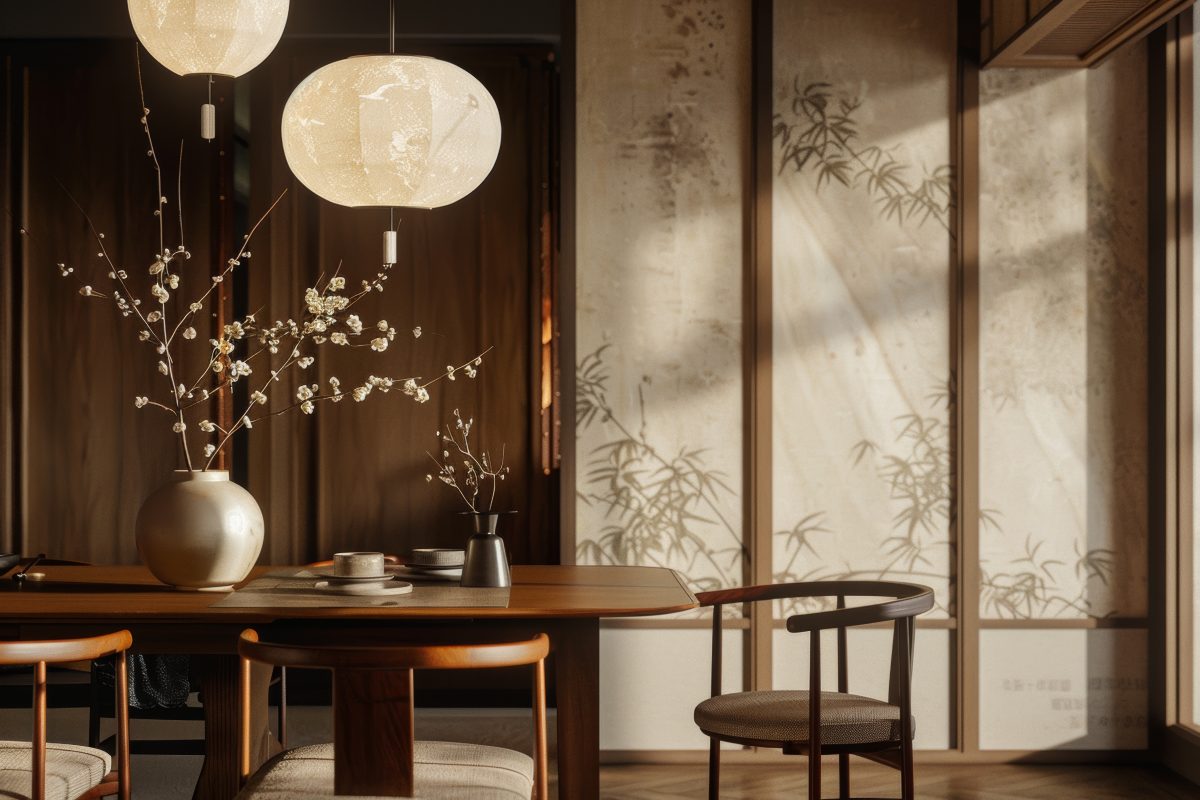
Key Elements of Japandi Design
The core elements of Japandi design lie in its minimalist approach, use of natural materials, neutral color palettes, and emphasis on functional, low-profile furniture. A key feature of this style is the clean, uncluttered look, which helps to create calm and foster a sense of focus. Natural materials such as wood, stone, linen, and bamboo are used extensively to bring warmth and texture to the space, while the neutral color palette, typically consisting of soft beiges, grays, and muted earth tones, contributes to the serene, grounded atmosphere. Furniture in Japandi interiors is purpose-driven, often low-profile with sleek, simple lines that emphasize both form and function. These elements come together to create a harmonious, balanced space that feels both lived-in and meticulously curated.
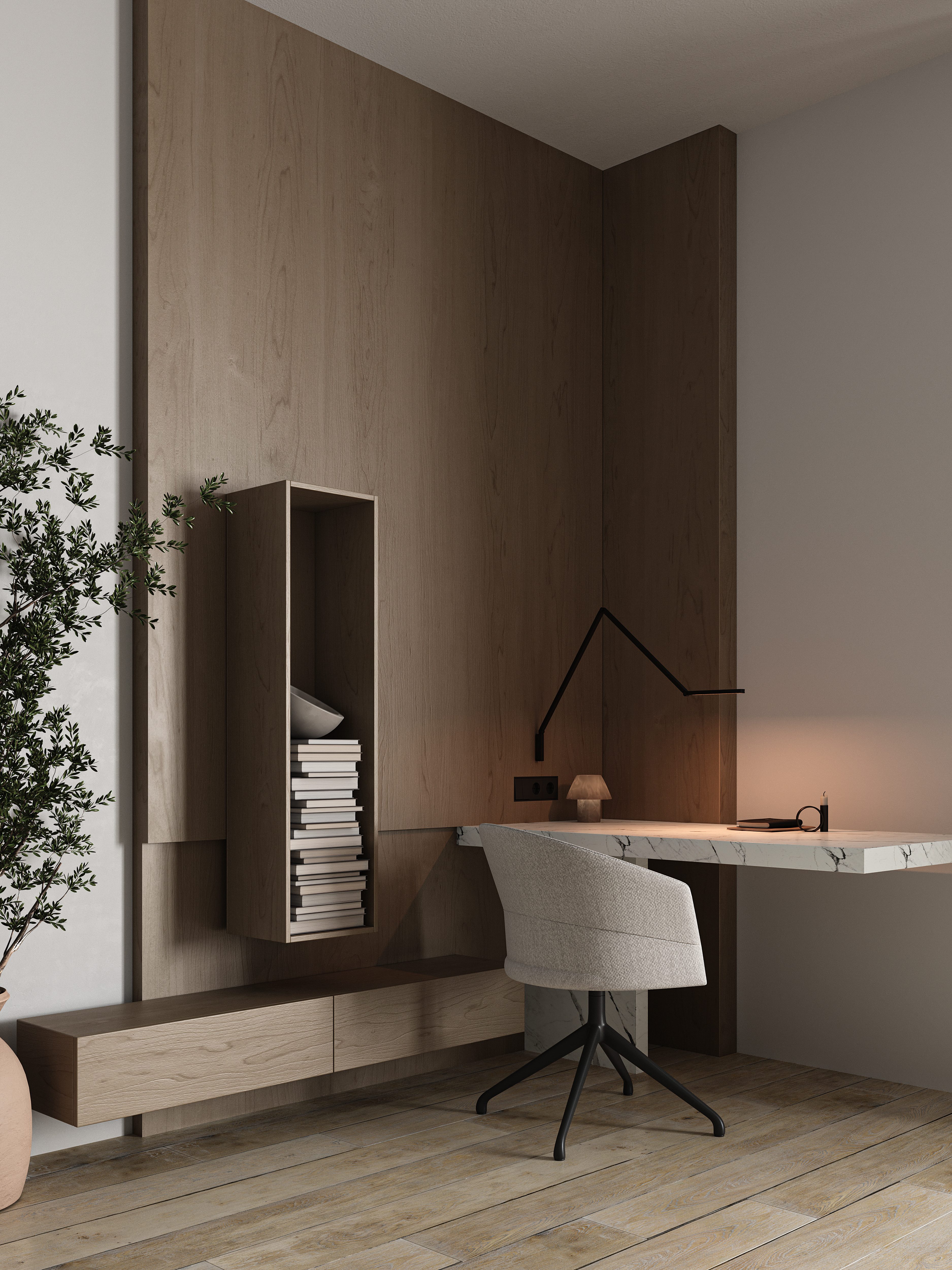
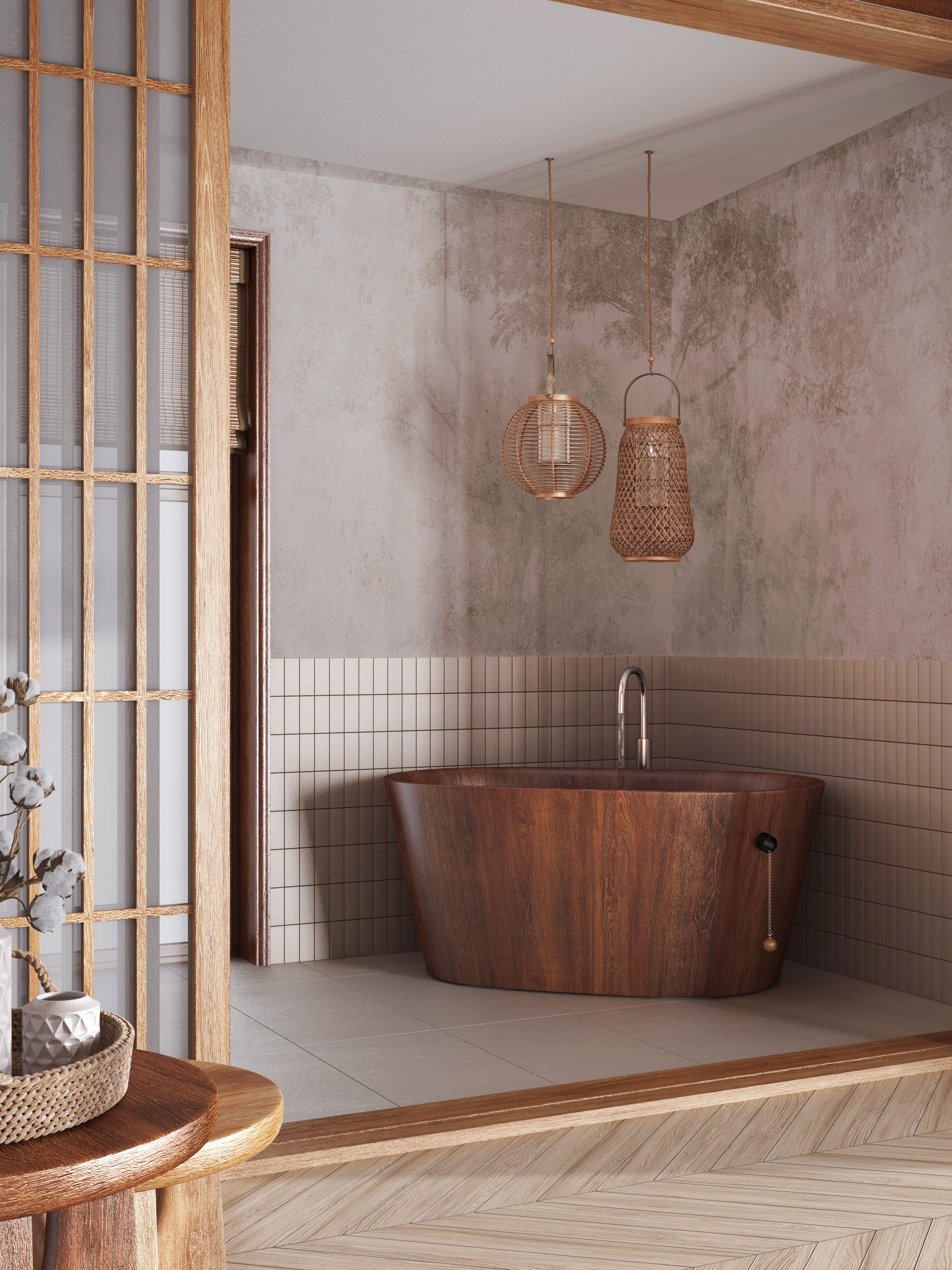
Creating a Japandi Space
When incorporating Japandi into different rooms of your home, the key is to embrace simplicity and functionality while maximizing natural light and space. In living rooms, opt for low-profile furniture like minimalist sofas and sleek wooden coffee tables. Use light, neutral colors for walls and furnishings to create an airy feel, and arrange furniture to promote open flow. Consider large windows or sheer curtains to allow natural light to flood the space, making it feel both open and serene. Slat walls can be an excellent addition, offering both aesthetic appeal and practical function. Their clean, linear design enhances the minimalist aesthetic while adding warmth and texture, and they can be used to subtly divide spaces without disrupting openness. For kitchens, focus on clean lines and natural materials such as wood and stone for countertops and cabinetry. Keep the design simple, with practical, uncluttered storage solutions that blend seamlessly into the space. In bedrooms, choose low, simple beds with natural wood frames and minimal bedding in soft, earthy tones. Allow for plenty of open space, and include elements like potted plants to bring the outdoors in, further enhancing the calm and relaxed ambiance of a Japandi-inspired room.
Wanna know more about how to build your own slat accent wall? Check out our blog DIY Accent Wall: Ladder Slat Wall to help start your journey!
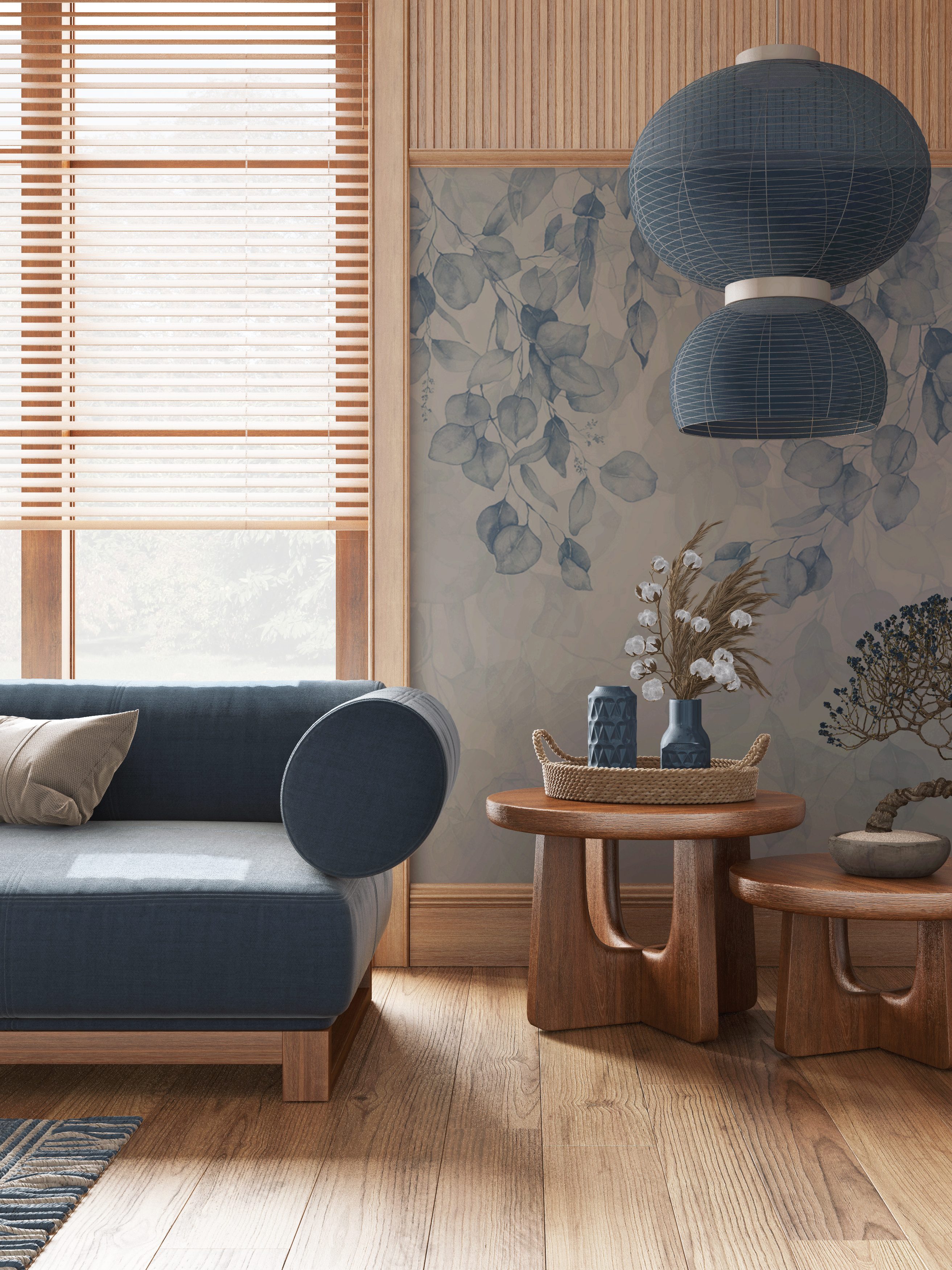
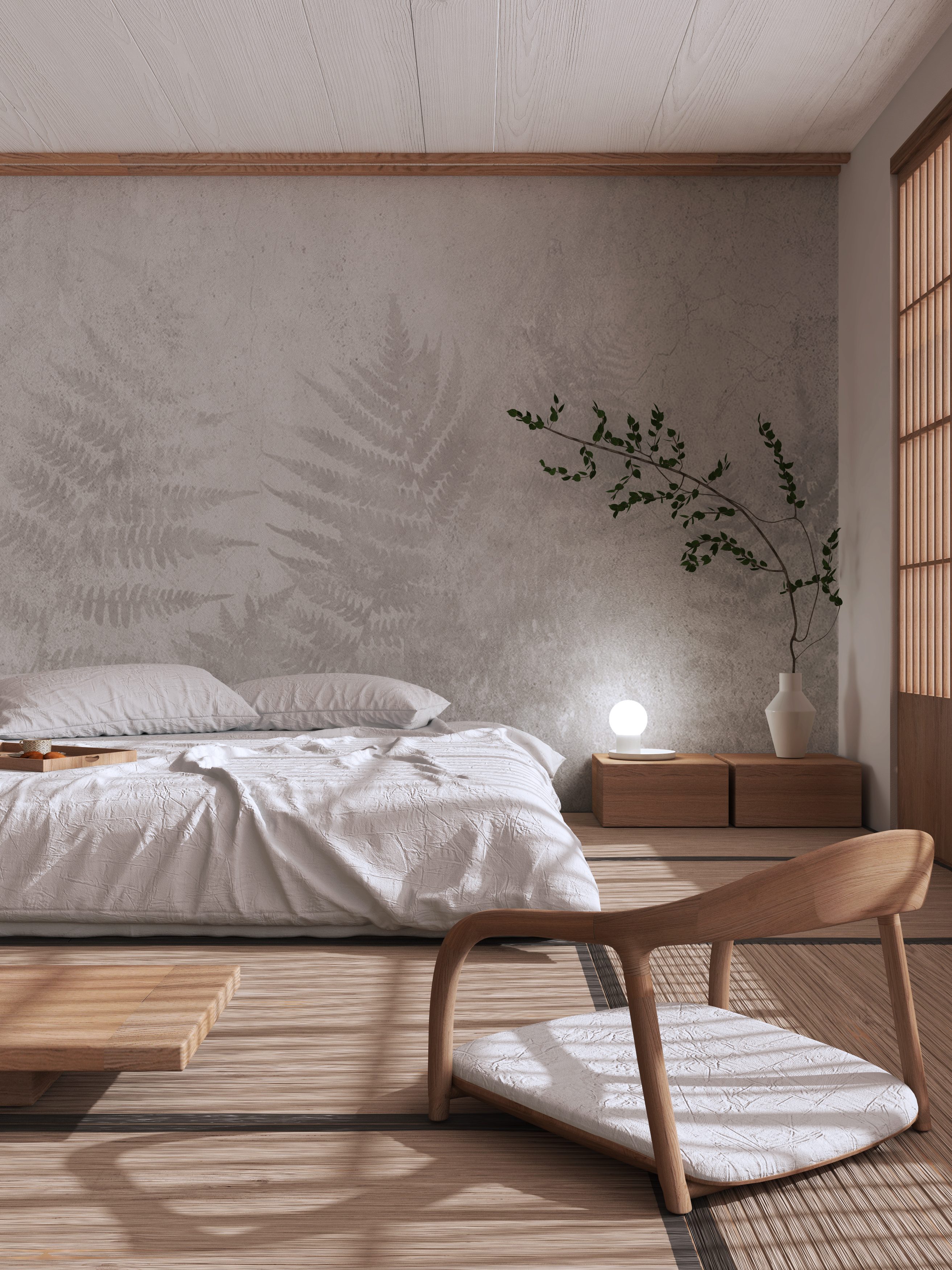
Decor and Accessories
Japandi décor focuses on simplicity and meaning, with each piece chosen for its function, craftsmanship, and subtle beauty. Accessories are kept to a minimum, but those that are included often hold personal significance or are handmade. Decorative ceramics, such as simple vases, bowls, and teacups, are key to the Japandi aesthetic, adding a touch of artistry while maintaining a sense of restraint. Woven textiles, such as soft rugs and throw blankets, help bring warmth and texture to the space, while neutral tones and simple patterns keep things understated.
Natural materials play a key role in achieving the effortless balance of Japandi design, with rattan emerging as a popular choice for accent pieces. Woven rattan pendant lights, storage baskets, or even small furniture pieces like stools and room dividers bring an organic softness to the clean lines of the space. The light, airy quality of rattan blends seamlessly with wood and stone, adding warmth and depth without overwhelming the minimalist aesthetic.
Wall art in Japandi interiors is carefully selected to enhance the atmosphere while maintaining a sense of calm. Rather than bold, statement-making pieces, the style favors subtle, nature-inspired artwork such as ink-wash paintings, abstract line drawings, or textured wall hangings. Framed prints in muted tones, handmade paper art, or sculptural wall panels—like wooden slat walls or woven rattan accents—add visual interest while preserving the space’s serene energy. Japandi décor encourages a mindful approach to decorating, ensuring that each item contributes to the overall sense of balance, warmth, and connection to nature.
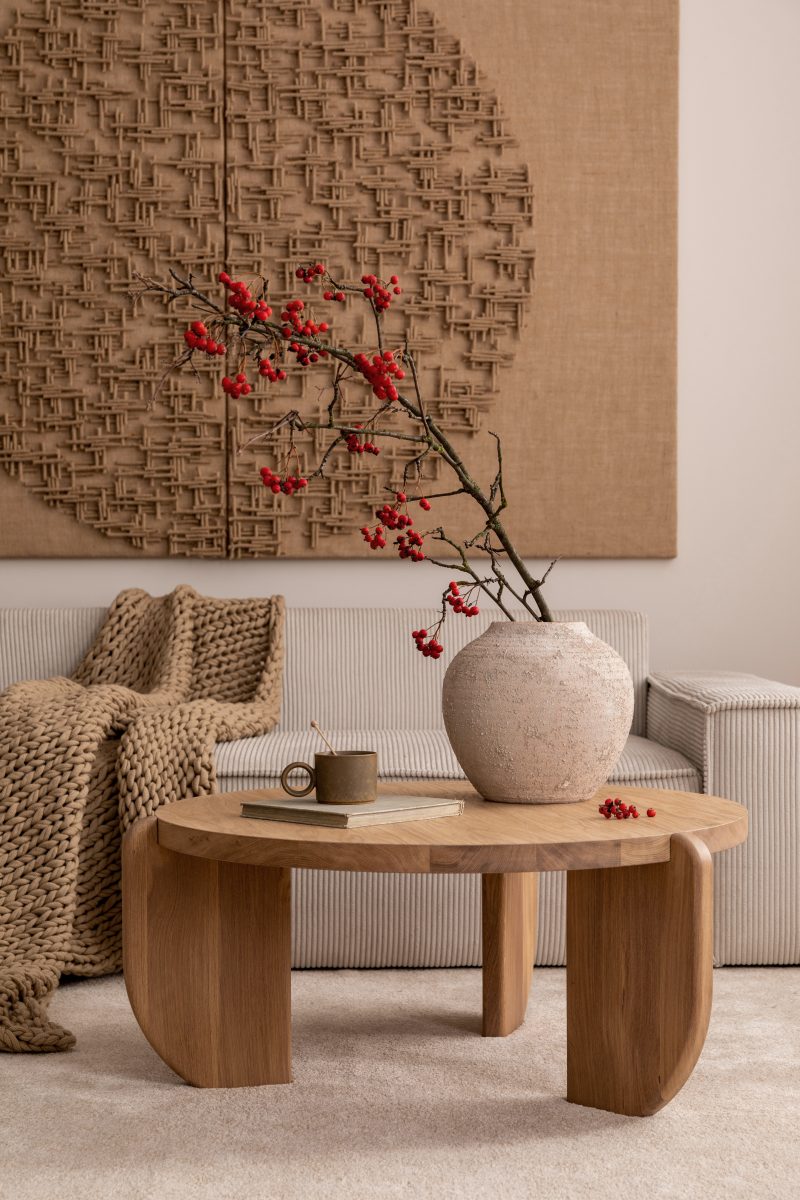
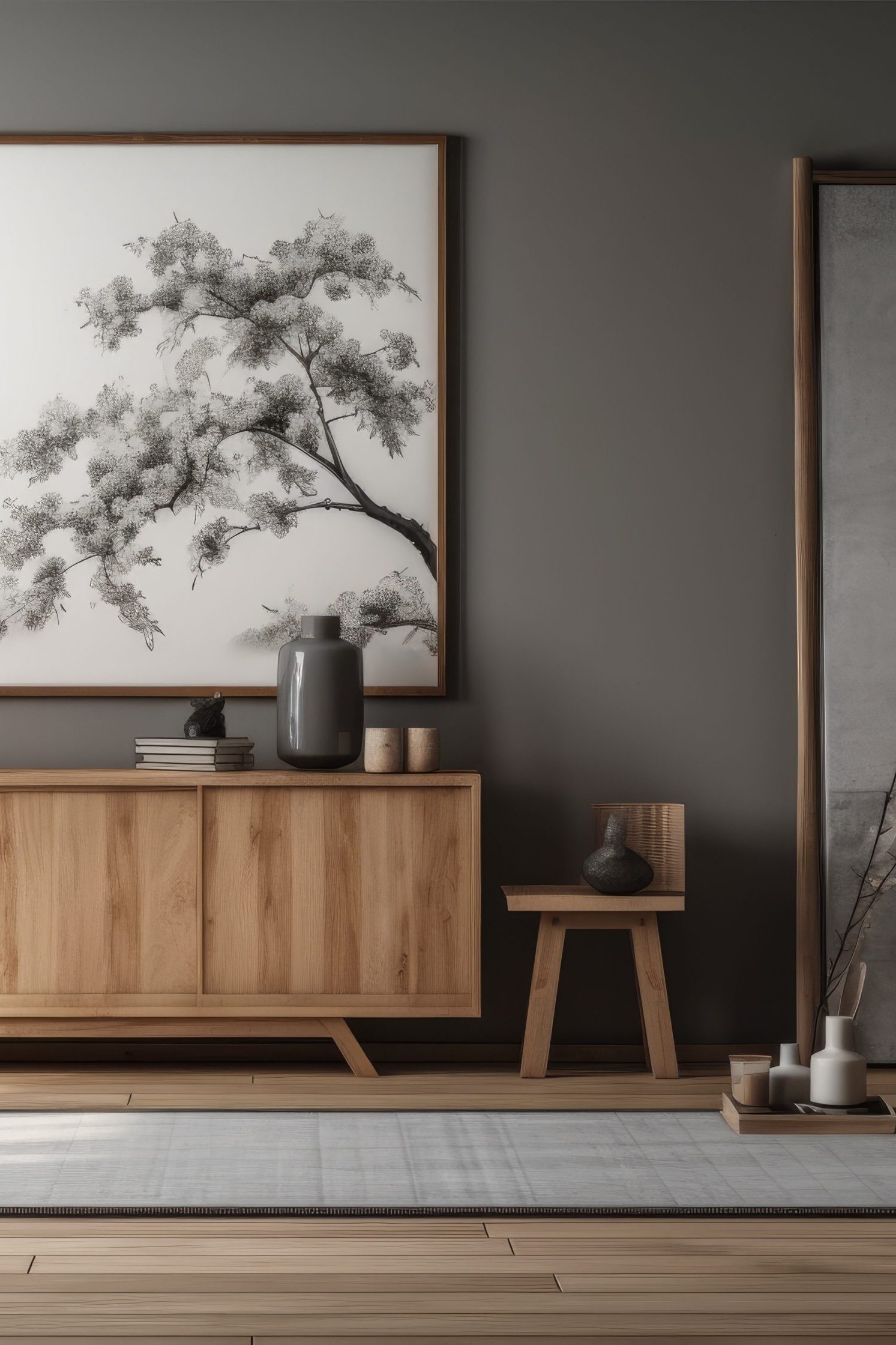
Sustainability and Mindful Living
One of the most appealing aspects of Japandi design is its commitment to sustainability and mindful living. The style emphasizes the use of eco-friendly materials like bamboo, stone, and FSC-certified wood—wood that has been sourced from responsibly managed forests that meet the environmental, social, and economic standards set by the Forest Stewardship Council (FSC). This ensures that the materials used are not only durable and timeless but also ethically and sustainably sourced.
Japandi furniture is crafted with longevity in mind, emphasizing durability over trends. The use of solid wood, handcrafted joinery, and high-quality finishes ensures that pieces remain functional and beautiful for decades, reducing the need for frequent replacements and minimizing waste. Additionally, Japandi encourages repurposing and upcycling whenever possible, reinforcing the idea that well-made items should be cherished rather than discarded. This philosophy extends beyond furniture to home accessories, favoring handmade ceramics, woven textiles, and other artisanal goods that celebrate traditional craftsmanship and sustainable production methods.
Beyond materials and craftsmanship, Japandi design promotes a lifestyle of mindful consumption. It discourages unnecessary clutter and instead focuses on intentional living—choosing fewer, better-quality pieces that serve a purpose and bring joy. This aligns with the principles of slow living, where spaces are designed to enhance well-being and create a sense of tranquility. By incorporating elements like energy-efficient lighting, breathable natural fabrics, and plants that improve indoor air quality, Japandi fosters a home environment that is not only aesthetically pleasing but also in tune with nature.

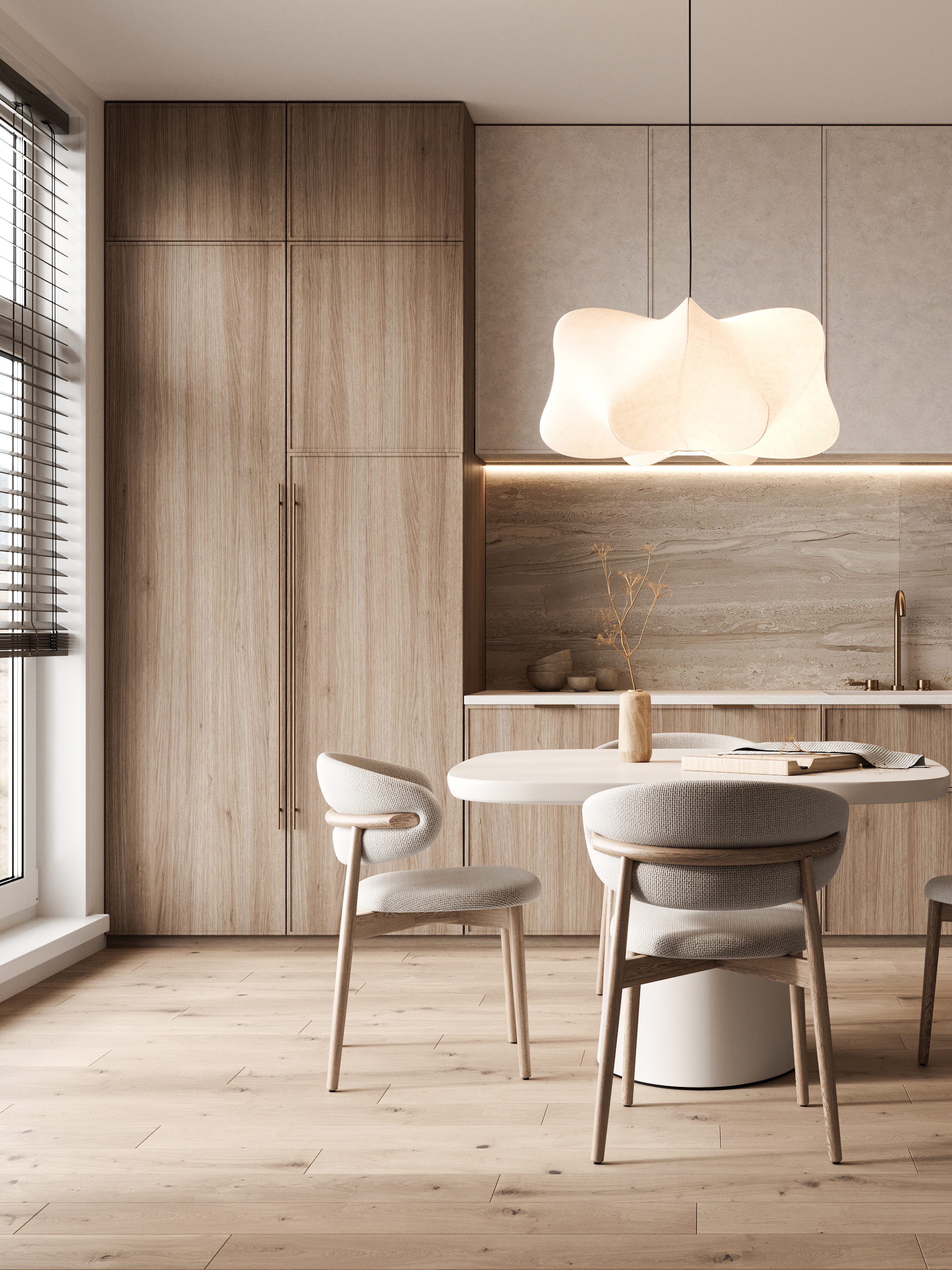
Incorporating Japandi into your home is more than just about creating a beautiful space; it’s about embracing a lifestyle that values simplicity, sustainability, and mindfulness. By blending the serene, functional elements of Japanese and Scandinavian design, you can create an environment that fosters relaxation, clarity, and connection to the natural world. Whether you’re redesigning an entire room or just looking to add a few thoughtful touches, Japandi allows for a harmonious balance of form and function that transforms your space into a peaceful sanctuary. Embrace the philosophy of “less is more” and let your home reflect the calm and intentional living that Japandi inspires.
Check out our Pinterest Board for more inspirational designs and make sure to follow us on Instagram and Facebook @WeAreWoodgrain